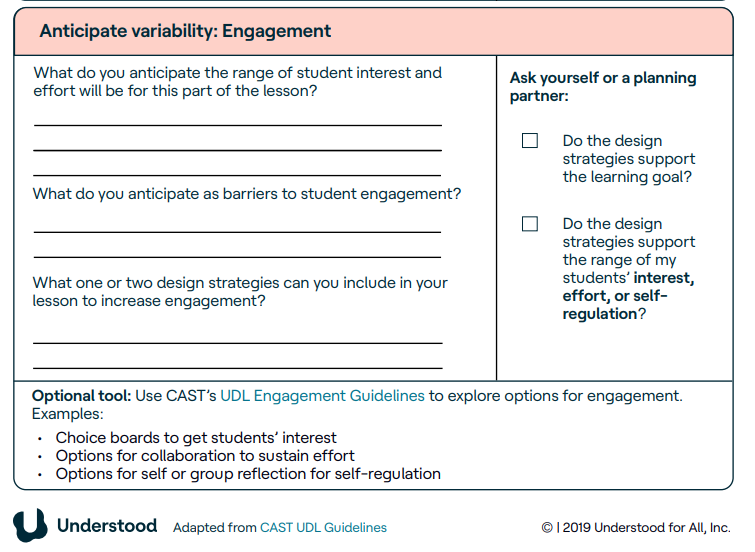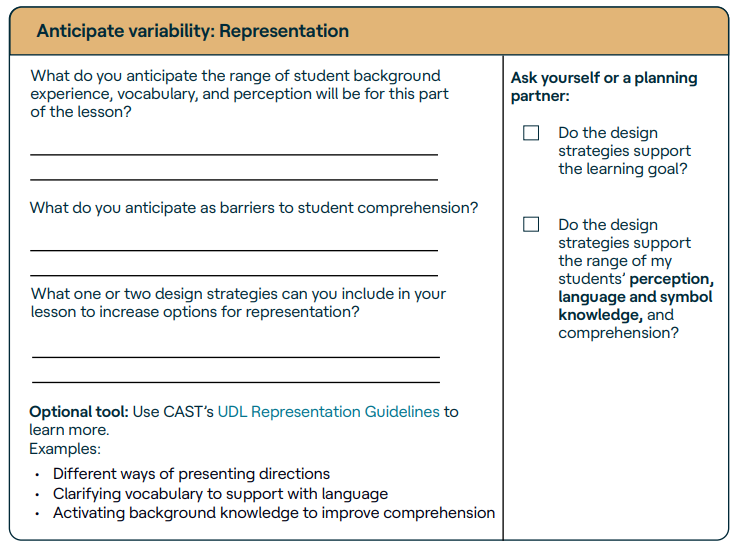How can we design lessons that not only cover the required content but also foster critical thinking and problem-solving skills? Understanding by Design (UbD) offers a framework to address these questions. Let’s explore how UbD can help us plan effective, student-centered learning experiences that focus on desired outcomes and meaningful assessments.

UbD emphasizes starting with the end in mind. First identify the desired learning outcomes and then plan the curriculum and assessments to achieve those outcomes. It involves three steps:
- Formulate learning objectives: Define what students should know and be able to do by the end of the unit.
- Determine Acceptable Evidence: Decide how students will demonstrate their newly acquired skills and how their learning will be assessed. Use the appropriate verbs to specify demonstrable skills and evaluate their quality.
- Plan and Design Learning Experiences and Instruction: Design activities and lessons that will lead to achieving the desired results. Ensure that learning activities, assessments, and instructional strategies are aligned with the learning objectives and desired outcomes.
By incorporating these key aspects into your learning activities, you can create student-centered learning experience, ensuring that all elements of the curriculum are aligned with learning objectives to achieve the planned goals.
Practice:Let’s try using the UbD method to design a simple learning unit for a subject or a topic of your interest and and publish it for online access.
1. Begin by selecting a subject and formulating one clear learning objective that defines what students should know and be able to do by the end of the unit.
2. Determine demonstrable evidence by deciding how students will demonstrate their learning
3. Design assessments (select from instructor-, peer-, and self-assessment methods) and determine quality criteria to inform students about the quality of their results and their progress.
4. Plan and design instruction that aligns with the learning objective. Create presentations and reuse open-access learning objects. Design learning activities and knowledge checks that support the UDL principles (using multiple means of engagement, representation, and expression). Include clear guidelines for students to inform their expectation.
5. Implement: publish your learning unit for open online access (Google Classroom, or WordPress). Ensure the unit and all its elements are openly accessible.
Share the URL address of the activity include the learning unit title and learning objective. Add your message as a comment to this page.
Option n
Practice:
1. Select a topic or subject for a learning activity. Define the learning objectives: ensure these are specific, measurable, and achievable.
2. Plan learning activities using multiple means of engagement, representation, and expression. Specify whether the activity is self-directed or instructor-facilitated.
- Multiple Means of Engagement: what choices learners will have for engaging with the material in multiple ways? Can learners access material both in a linear and non-linear pathways: e.g. proceeding through the consecutive steps scheduled in time, and/or proceeding through the groups of tasks creating an individual pathway through the material?
- Multiple Means of Representation: Can learners select among the multiple ways (digital formats) in which to engage with the material presented to them for learning (text, audio, video)?
- Multiple Means of Action and Expression: what are the learners’ choices in the ways of demonstrating their acquired knowledge (written reports, presentations, creative projects)? What are the learners’ choices in flexible assessment options and reflection on their progress?
2. Write the guidelines specifying:
- What: What learners are expected to accomplish.
- Where: The digital space where the activity will take place.
- How: duration of the activity and whether the activity is self-directed or instructor-facilitated.
- Quality criteria: the standards to achieve the objectives. Write guidelines that are informative for students: explain the quality criteria, specify how the results will be assessed (e.g., the grades assigned for a discussion participation per week, main points to be included in a written assignment, the word count and the rubric for a project, etc.)
3. Implement: publish your activity for open access online (in Google class or WordPress). Include the the guidelines, which your learners will use to complete the activity.
Share the URL address of the activity with the description of the activity’s learning objectives. Add your message as a comment to this page.
Resources:
Jay McTighe, Grant Wiggins (2014) Understanding by Design ® Framework
Writing Learning Objectives. AAMS 2016 https://www.aamc.org/system/files?file=2019-07/learning-objectives.pdf
CAST | UDL Tips for Developing Learning Goals
Example: cast-_-key-questions-to-consider-when-planning-lessons.pdf



Leave a Reply